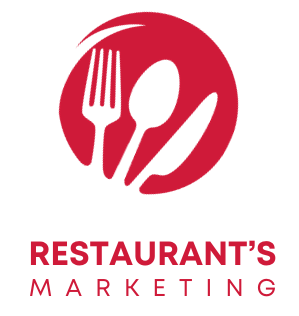A strong marketing strategy plays a vital part in operating a successful restaurant, much like a carefully planned menu does: it captivates, attracts, and leaves a lasting impression.
In the restaurant industry, juggling day-to-day operations is essential, but neglecting marketing can stunt growth. Owners of successful restaurants understand that drawing in new customers and keeping existing customers depends on efficient marketing.
Unfortunately, many restaurant owners make common marketing mistakes that hinder success. Finding a balance between operations and marketing is necessary for sustained growth and a thriving business.
The startling fact that 85% of diners in the present digital age rely on their restaurant choices based on information and reviews they find online is worth mentioning. This insight, revealed by Restaurant Business Online, emphasises the important role an online presence plays in attracting customers to your restaurant.
This blog is designed to serve as a comprehensive guide, equipping you with the knowledge and insights necessary to avoid these common marketing mistakes, ensuring your restaurant marketing efforts are not only aligned but also driving tangible results.
13 Restaurant Marketing Mistakes to Avoid
Here’s a guide to help you avoid these marketing mistakes and ensure your restaurant marketing strategies are on the right track.

1. Neglecting Your Online Presence
Overlooking your restaurant’s online presence in today’s digital era is a critical mistake. Without a compelling website and a strong social media presence, you miss out on valuable opportunities to connect with potential customers, showcase your offerings, and build a loyal online community. Remember, you will lose customers to your competitors if you neglect this essential aspect of modern business.
2. Ignoring Google Reviews
Customer reviews, including those on platforms like Google Reviews, are the lifeblood of the restaurant industry. Neglecting or mishandling these reviews can seriously damage your restaurant’s credibility.
Customers heavily rely on Google reviews when deciding where to dine, and unaddressed negative comments may drive potential customers away. When responding to Google reviews, whether positive or negative, it’s crucial to be genuine. Express gratitude for positive feedback and address specific concerns raised in negative reviews.
3. Inconsistent Branding
The brand of your restaurant is its distinct personality. Inconsistencies across various platforms can confuse potential customers and weaken your brand image. A recognisable and memorable identity is primarily dependent on a consistent and unified brand presence across all media, including online and physical settings.
4. Overlooking Google Maps SEO
To make sure your restaurant shows up highly in local searches, local search engine optimisation is essential. Ignoring local Google Maps SEO can hurt foot traffic and local customer engagement by making you less visible to prospective customers in the area where you operate.
Address common issues like a shortage of images, which affects decision-making, and a lack of reviews, raising customer concerns. Actively manage your online presence by adding visuals and encouraging reviews to boost your restaurant’s appeal locally.
5. Failing to Utilise Email Marketing
Email marketing is still an effective way to interact with your target market. If you don’t use this tool, you’ll be missing out on chances to promote your business, have direct contact with your customers, and create enduring bonds that promote customer loyalty.
When executed correctly, email marketing can attract and retain repeat customers. You can enhance your brand’s visibility in their preferences and create a repeat customer base by providing relevant content and personalised campaigns regularly. Utilise email marketing to collect reviews, enhance Google Maps SEO, and build a strong online reputation.
6. Disregarding Visual Content
Having visually appealing and high-quality images is a must in the visually-driven food industry. Ignoring visual content could lead to a drop in customer interest and engagement because visually appealing photos and videos are essential to drawing customers in and communicating your restaurant’s distinctive features.
7. Forgetting Mobile Optimisation
With the majority of users accessing information on their mobile devices, neglecting mobile optimisation is a major disadvantage. To ensure that potential consumers can easily find and interact with your business, it is imperative to have a mobile-friendly website and easily accessible smartphone interfaces.
Additionally, providing a straightforward way to reserve tables if available ensures a seamless mobile experience, enhancing customer convenience and engagement.
8. Not Understanding Your Target Market
Neglecting this essential knowledge harms the potential for creating marketing strategies that genuinely engage and resonate with your target market. Understanding your target market’s preferences and interests in depth is necessary to craft captivating content. You can make a deeper connection with them and grab their attention by customising the content, promotions, and overall strategy to speak to their unique needs.
9. No Performance Monitoring
To determine the effectiveness of marketing strategies, thorough tracking is required. Using analytics software gives you a clear view of the tactics that work best for your target market. This data-driven insight enables prompt modifications, guaranteeing that your marketing strategies stay precisely aligned with customer needs.
Something that isn’t measured can’t be improved, so it is important to monitor performance and continuously improve. Ignoring this crucial component impairs your capacity to assess effectiveness and reduces your flexibility, which is necessary to adjust and improve strategies for long-term success.
Ignoring this crucial component impairs your capacity to assess effectiveness and reduces your flexibility, which is necessary to adjust and improve strategies for long-term success.
10. Quitting Early
Successful marketing strategies for restaurants require time to gain attraction and visibility. Patience plays an important role in allowing your campaigns to reach and resonate with your target market. You lose out on potential growth and customer engagement if you give up too soon before your marketing strategies have had the time to work.
To increase brand awareness and draw in customers, consistency and perseverance are essential. Instead of expecting immediate results, it’s important to stay committed to your marketing strategies, adjusting and refining your approach as needed to achieve long-term success in the competitive restaurant industry.
11. Service Sabotage
One critical restaurant marketing mistake to avoid is maintaining an environment with angry or misbehaving staff. The customer experience is crucial in the restaurant industry, and poor experiences can quickly tarnish your restaurant’s reputation.
Negative encounters with employees can result in negative word of mouth and bad Google reviews, which turn away potential customers. Investing in staff training and creating a positive work culture not only ensures a welcoming atmosphere for loyal customers but also contributes to a positive online presence.
12. No Online Ordering System
Failure to implement an online ordering system is a major restaurant marketing mistake. Customers demand convenience in the digital age, and online ordering offers them a quick and easy method to enjoy their meals.
Ignoring this option could result in missed opportunities as potential customers look for the convenience of online ordering. Accepting online orders boosts your overall marketing strategy by increasing your customer base and projecting your restaurant as a tech-savvy, customer-focused establishment.
Frequently Asked Questions (FAQs)

Let’s explore the frequently asked questions restaurant owners have about restaurant marketing mistakes.
Encourage positive reviews from satisfied customers. Genuinely address negative feedback: admit mistakes, apologise, and outline remedies on your end. If the issue is on the customer’s side, provide a clear and genuine explanation to resolve any miscommunication. Proactive online engagement builds trust and a positive restaurant image.
Not necessarily. Select platforms that correspond with your target market. If the customer base frequently visits Instagram and Facebook, focus on those platforms to maximise your impact. If you have a younger audience, TikTok is a great option to consider.
To improve your restaurant’s visibility and attract more customers, focus on optimising your Google My Business profile. Ensure accurate content, encourage positive feedback, add quality images, and engage with potential customers to enhance your online presence and Google Maps ranking.
Conclusion
We hope that this blog has helped you gain a deeper understanding of the common restaurant marketing mistakes and how they affect the business.
Take a moment to pause and reflect on the status of your restaurant marketing. Are you proactively avoiding the common mistakes we’ve discussed? Are you actively engaging with your target audience and cultivating a strong brand identity?
Considering a restaurant agency to avoid the 13 marketing mistakes? Explore our previous blog on how I choose the right marketing agency for my restaurant.
Are you ready to up your restaurant marketing game? Book a consultation with our experts today and watch your business thrive. Book here!
You’ll get the same guidance and support that we give to our clients.
Latha Karthigaa, founder of Restaurant’s Marketing, is dedicated to enhancing dining experiences. Her strategic insights focus on attracting and retaining customers, driving increased foot traffic, optimising order volumes, and maximising off-peak hours. As a transformative force in the industry, she reshapes the narrative of success for every restaurant under her expert guidance.
Contact
- latha(at)restaurantsmarketing(dot)com(dot)au


